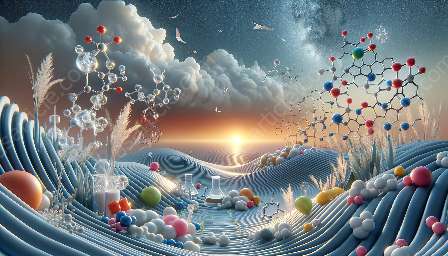Polymer thin films play a crucial role in surface science and polymer sciences, serving as coatings, adhesives, and even in microelectronics. Their stability and aging are vital aspects that can impact their performance and longevity. In this article, we'll delve into the factors affecting the stability and aging of polymer thin films, their implications, and ways to enhance their durability.
Fundamentals of Polymer Thin Films
Polymer thin films are thin layers of polymer materials with nanoscale to microscale thickness. They are widely used in various applications due to their unique properties, such as flexibility, transparency, and chemical resistance. Understanding the stability and aging of polymer thin films is crucial for optimizing their performance over time.
Factors Affecting Stability and Aging
The stability and aging of polymer thin films are influenced by several factors:
- Environmental Exposure: Exposure to environmental conditions, such as moisture, heat, and UV radiation, can cause degradation and aging of the polymer thin films.
- Chemical Interactions: Interactions with chemicals, solvents, and other substances can lead to changes in the structure and properties of polymer thin films.
- Polymer Structure: The molecular structure and orientation of polymers in thin films can impact their stability and aging behavior. Factors such as crystallinity, chain mobility, and crosslinking influence the overall stability.
- Surface Interactions: Interactions with the substrate and any coating or interface layers can affect the stability and aging of polymer thin films.
- Processing Conditions: The processing parameters, such as temperature, pressure, and curing methods, significantly impact the stability and aging behavior of polymer thin films.
Implications of Aging and Instability
The aging and instability of polymer thin films can have various implications:
- Performance Degradation: Aging can lead to a decline in mechanical, optical, and electrical properties, impacting the overall performance of the thin films.
- Reduced Durability: Instability may result in reduced durability and lifetime of the polymer thin films, affecting their long-term reliability in applications.
- Corrosion and Degradation: Chemical and environmental aging can lead to corrosion, degradation, and delamination of the thin films.
- Additive Incorporation: Incorporating additives, such as stabilizers and antioxidants, can enhance the resistance of polymer thin films to aging and degradation.
- Surface Modification: Surface treatments and coatings can provide additional protection against environmental exposure and chemical interactions.
- Polymer Design: Tailoring the molecular structure and composition of polymers can optimize their stability and resistance to aging.
- Advanced Processing Techniques: Utilizing advanced processing techniques, such as plasma treatment and atomic layer deposition, can improve the stability and aging behavior of polymer thin films.
Enhancing Stability and Aging Resistance
To improve the stability and aging resistance of polymer thin films, various strategies can be employed:
Conclusion
Understanding the stability and aging of polymer thin films is essential for optimizing their performance and reliability in various applications. By considering the factors affecting aging and instability, exploring their implications, and implementing effective enhancement strategies, the durability and longevity of polymer thin films can be significantly improved.

